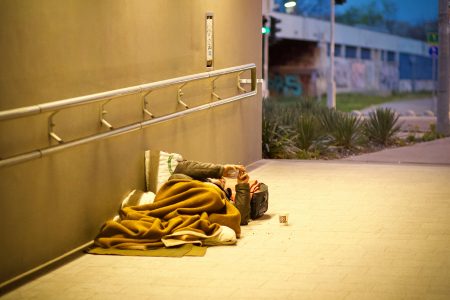Widgetized Section
Go to Admin » Appearance » Widgets » and move Gabfire Widget: Social into that MastheadOverlay zone
Homelessness LGBT Youth in America: A Continuing Epidemic
The views expressed are those of the author and do not necessarily reflect the views of ASPA as an organization.
By Richard Greggory Johnson III
December 16, 2024

Introduction
LGBT homelessness in America is a significant social issue that speaks to the unfairness in employment, housing healthcare and family matters. Lesbian, gay, bisexual and transgender (LGBT) individuals face unique challenges that put them at higher risk of becoming homeless compared to their non-LGBT peers. This analysis explores the root causes, statistical trends, impacts and potential solutions to this pervasive problem.
The Issue
Very few people would assume that homelessness is as acute as it is the United States. Indeed, homelessness is widespread in this nation, affecting an estimated 582,462 people on any given night as of 2022. A subset of the homeless population includes the LGBT population which is disproportionately represented. Some accounts suggest that LGBT youth account for up to 40 percent of the homeless youth population, even though they make up only 7 percent of the total youth population. Similarly, LGBT adults experience higher rates of housing instability, including homelessness, than their cisgender and heterosexual counterparts.
Reasons for LGBT Homelessness Youth
Parental Rejection
Parental rejection is a very real and ongoing issues that leads to homelessness for many LGBT youth. Because of biases many parents become outraged and abusive when they find that your child is LGBT. A primary reason for rage from the LGBT parents is due to religious belief. Many of these parents would throw their LGBT child out because they firmly believe that their God would not want these parents to live in covenant by keeping their LGBT child at home.
Discrimination
Discrimination in housing and employment further exacerbates homelessness among LGBT youth. While legal protections for LGBT individuals have improved, with the Supreme Court’s 2020 ruling in Bostock v. Clayton County extending workplace protections under Title VII of the Civil Rights Act, housing discrimination remains a significant issue. Many LGBT youth and LGBT generally must deal with the unfortunate circumstances that doesn’t allow them to have employment opportunities.
Homeless LGBT Youth of Color
Homeless LGBT youth of color have it much harder than mainstream LGBT homeless youth. This is because Black and Brown LGBT homeless youth continue to be marginalized when trying to find housing and money for food. The 1990’s movie Paris is Burning and the 2018 television show, Pose, both depict the challenges and trauma that Homeless LGBT youth of color specifically must endure. The trauma and abuse that comes from living on the streets when there is no hope and little chances for survival.
Many of these youth can only survive by sex work. The ability to sell their body is typically the only way that a homeless youth can make money with little education. However, sex work puts homeless LGBT youth are greater risk for HIV/AIDS and other diseases can be contracted from sex with strangers. Though it must be noted that not all sex work leads to disease and for some adults they choose to make a living via sex work. The difference is that homeless LGBT homeless youth have very little opportunities to make money legitimately. Sex work for homeless LGBT youth also face higher rates of physical and sexual violence, particularly transgender women of color, who experience intersecting layers of discrimination.
Policy Recommendations
LGBT homelessness is unfortunately not new. However, public administration must start paying attention to address remedies to help eradicate this epidemic with a number of different approaches.
Starting first with wrap around services for families with an LGBT youth. These services would assist parents in understanding LGBT matters. Services might also include but would not be limited to counseling, meetings with queer youth groups, programs for education etc. These services should be free or close to free.
Next, there must be stronger anti-Discrimination protections enforcing and expanding anti-discrimination laws this nation. These protections must be done at the Federal level because there are still some states where queer discrimination is alive, well and growing.
Finally, government agencies and nonprofit organizations should allocate targeted funding for programs addressing LGBT homelessness. Additionally, more research is needed to understand the specific needs of subgroups within the LGBT community, such as racial minorities, transgender individuals and rural populations.
Conclusion
LGBT homelessness in America is a complex issue rooted in systemic inequalities and societal biases. Addressing this epidemic will need a comprehensive strategy that intersect good social reform, wrap around services, and community education. By acknowledging and understanding the real reasons for homeless LGBT youth, only then can public administration have an impact on this crucial situation not only for the youth but for society.
Author: Dr. Richard Greggory Johnson III; Professor; Master of Public Administration Program; MA in Urban and Public Affairs Program Director, Institutional Review Board (IRB) Fellow, National Academy of Public Administration (NAPA); College of Arts & Sciences/University of San Francisco


Follow Us!